2018, when Lithuania is celebrating its 100th birthday, is THE time to visit and re-explore the country you would be surprised how many people do not know. And I can tell you one thing, whatever your stereotypes and expectations for this ex-Soviet country are, just forget it, because Lithuania is far more interesting, than people might think.
So say ‘happy birthday’ to Lithuania by learning a tiny bit more about this mysterious land of forest and swamps, visit it and share the word with your family and friends. Let me seduce you with the stories and pictures but once you come and see it by yourself, I promise, you will not be disappointed.
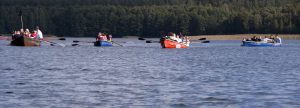
- Hike. 33,3% of area is forest and there are not so many people around, the average density of whole country is 45 people per km^2. That means it would be a sin not to explore the nature of the wild Baltics on feet (or a bike). Especially that the climate is very fortunate for such an adventure as you can experience 4 seasons during the year, with snowy winters and sunny summers. Also, there are plenty of water: rivers, lakes, even the sea where you can swim after the long walk. The best thing about Lithuania is that the nature does not want to kill you here, as there are no venomous snakes, big and scary spiders, human eating plants or mutant ants that are a size of human palm. Instead of monsters here, in the nature, you will find 386 bird species (in the country that is only 2 times the size of Belgium), wild berries and mushrooms and the adventure you have always wished for. Moreover, hiking would give you an opportunity to explore not only the biggest cities in the country but also get familiar with the rural areas and it is a great opportunity to meet Lithuanians and befriend them (everyone should have at least one Lithuanian friend).
What to do if you are not familiar with hiking or are nervous to do it in a foreign country? Worry not, Lithuania is full of wonders and hiking clubs (almost every town has at least one), some of them are open for anyone to join, some ask for a hike fee. There are travelling agencies that organize commercial hikes as well. My favorite hiking club, of course, is Vilnius University Hiking Club, where I have spent 4 years of my student life and had head-exploding adventures. They organize free hikes around Vilnius usually and invite anyone to join. One of the commercial hike organizers that I find attractive too is TrenkTuras, they inspire people to try and overcome their limits in a safe environment. So what are you waiting for, Lithuanians are hiking, join them!
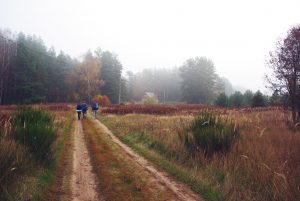
- Rent a kayak. As I mentioned before, Lithuania is rich in water and there are hundreds of smaller or bigger lakes and rivers, that you could use as a summer getaway. If you like more peaceful floating on a water, get a boat and paddle around the lake, or even better, use the water ways that connects several lakes and conquer them all! For this one you might want to travel to Palūšė, which is in Aukštaitijos National Park and see by yourself what a great lake system we have! If you are more up to challenges you might want to pick a kayak and jump into the runny waters of Vilnia river, that floats though the central parts of Vilnius. It is magical, believe me. Kayak renting in Lithuania is very well organised, they will not only bring you and kayaks to the starting point of your choice, they will also pick you up where ever you end your trip. High class service and freedom is guaranteed for those, who want to make bigger distances or want to have a trip for several days and camp on a shore of the flow. All possible in Lithuania!
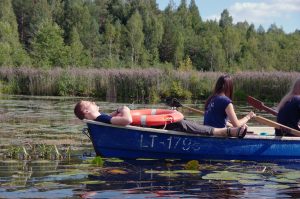
- Go Second-hand/flea shopping. Lithuania is crazy about second-hand shopping, I like to jokingly say that this country has the biggest number of second-hand shops per Capita (I do not know if it is true or not) in the world as you could find them anywhere. I mean, everywhere for real; you could even find several stores in the old town in Vilnius or center of the smallest town in Lithuania that you could imagine. And these places are gold mines for style junkies as you could find vintage, one of the type clothes and accessories. For a good price too. Humana is the biggest second-hand clothes provider in Lithuania but not the only one for sure, some of the shops do not even have a name! For those who do not care about fashion, flea markets would be the Sunday church (usually happening on Sundays, actually), you could find there anything. And yes, this is a challenge. The biggest flea market that I know is happening every weekend in Panevėžys, which is an insignificant town in the North of the country, yet this market attracts people from all around the country (and even Latvia, as it is not too far). So there is no need to put your valet on diet, you will afford any Gucci bag in a second-hand provider.

- Visit a festival. Every summer day in Lithuania is like a festival and there is constantly something happening from music, to art, theater, science or food festivals all around the country. In my humble opinion, the size of festivals here is one big advantage, as they are not super massive, I think in European scale they could even be called small ones, but nevertheless it is still a fair amount of people having fun together. That means that by the end of the festival you will have at least 5 new life-long friends, bump into your favorite band at least once (this is how I gathered autographs of my beloved musicians!) and know all of the bar keepers by name. It is cozy, familiar and as a rule, surrounded by an amazing nature. And the bands, especially if you go for jazz or heavy music festivals, are quite impressive too, do not hesitate and check it out by yourself. So why not to combine your trip with a spice of pagan culture festival or headbanging marathon in a metal weekend?
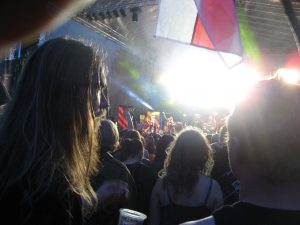
- Do not get lost in Kūlgrinda. Well this is a really really good one, I wrote it at the end so only the most patient readers could get this absolutely fascinating information because it astonished me so much, that I still have goosebumps. At anytime of the day I would be ready to pack my stuff and go to Kūlgrinda if anyone would ask me to come. This is basically touching the centuries of history with your feet and even recreating it (depends on your and your team’s role playing skills). Okey okey, but what is that mysterious and magical Kūlgrinda, you would ask and I would be very excited to answer!
In 13-14th centuries, when Teutonic knights gave Lithuanians hard time, people had to use creativity to win the fights and protect their people. Lithuania was (and still is) a rather swampy region which made it not so easy to travel though and local people used this feature of the land very well for fleeing or luring the enemy straight into hell. People made Kūlgrindas, which are hidden underwater roads, to help them to escape secretly. From the secret ways crossing the swamps or rivers, Kūlgrinda is the most advanced road, made particularly of stones; other types of roads, like Medgrinda, which is made of wood, or Žemgrinda, which is made of earth, did not survive long centuries to this day (or very few did, many were forgotten).
It usually took several years, if not decades, to make a decent Kūlgrinda, as these roads could have been made only during the winter, when the swamps would freeze. Then people would lay the stones, wood or earth on the ice and let it sink when the spring comes. It is though that wooden poles where used to stabilize the road so the stones would not be washed away.
Do not think it was very easy to find it yourself, as the road was 1-1,5 meter underwater, covered by swamp mud as well. Lithuanians attracted their enemies to the swamps and then used small secret underwater ways to get away, while the enemy with heavy weaponry and armor would sink in the mud. Kūlgrindas were kept in secret and betrayal was punished very hard.
These days not so many of them are known, as the knowledge died with people centuries ago. It is thought, that there still are 27 Kūlgrindos and 7 Medgrindos left. The oldest Medgrinda is found near Kernavė, the first capital city of Lithuania, and is dated to the 4-7th centuries! Kūlgrindas are mainly found in Lithuania but some of them are located in Kaliningrad, Belarus or Latvia, which are basically former lands of Baltic tribes, so most likely there are many more of them, than we can estimate now.
And now *drum roll* I announce you that one Kūlgrinda in Lithuania is open for tourists to walk through! And trust me, it is an amazing one too. It was first mentioned in 14th century by Teutonic knights in Lithuanian route report (Die Littauischen Wegeberichte) and later in 1903 by L. Krzywicki (Polish historian) who did a research on it. He wrote that Sietuvos Kūlgrinda is like a miracle, as stones are flat and big as a table and one can ride through it with 4 horses in a row but you had to be very careful as if your carriage drives to close to the edge it would sink into the deepness without any chance of rescue. By local people it is said that this Kūlgrinda is a work of giants as the swamp itself it 5-7 meters deep, so imagine how many stones people needed to sink to be able to have an underwater way that is only 1 meter in depth!? Now 3 parts of this Kūlgrinda are known: the first one is leading though Sietuva river, it is 250 meters long and 8-20 (!) meters wide, other two are leading though the swamps nearby and are 180-150 meters long, 3-4 meters in width. These days there is an official touristic pathway, covering one part of Kūlgrinda and some parts of the swamp and I believe it is a must do activity in Lithuania: to feel the stones with your feet, that are old as a history itself. And get incredibly dirty, of course, because getting dirty in a swamp is always fun!
Here you can see some pictures from a Kūlgrinda hike, here and here colleagues bloggers wrote about their experience during the hike (in Lithuanian).
And so flew the main 5 suggestions I wanted to share. But there is much much more in this tiny country, here are some short bonus suggestions:
- Travel back in time to experience USSR with these guys.
- Explore abandoned buildings, like churches, army facilities and factories.
- Learn how to bake a real dark Lithuanian bread at Arklio muziejus in Anykščiai.
- Taste Lithuanian beer in Rinkuškiai or Lithuanian mead in Stakliškės.
So this is it! In the next part I will introduce you to must see places in Lithuania.
Iki pasimatymo!

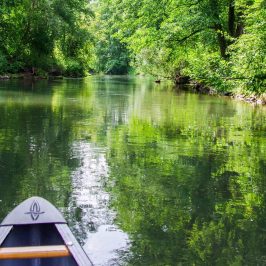
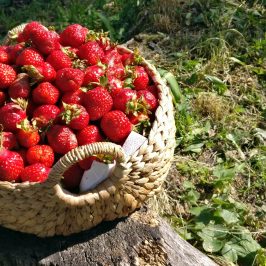
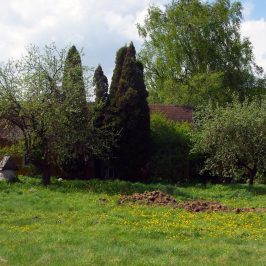
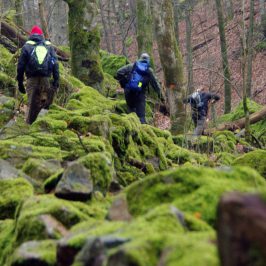
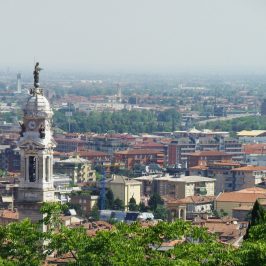
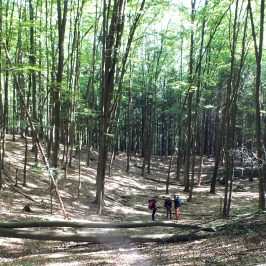
Lithuania. Happy Birthday and what to see once you are here (2/3) – Travelling cat
[…] National Park. You already know what to do there from my previous post but the nature is not the only thing to see in the National Park. The town of Palūšė has unique […]